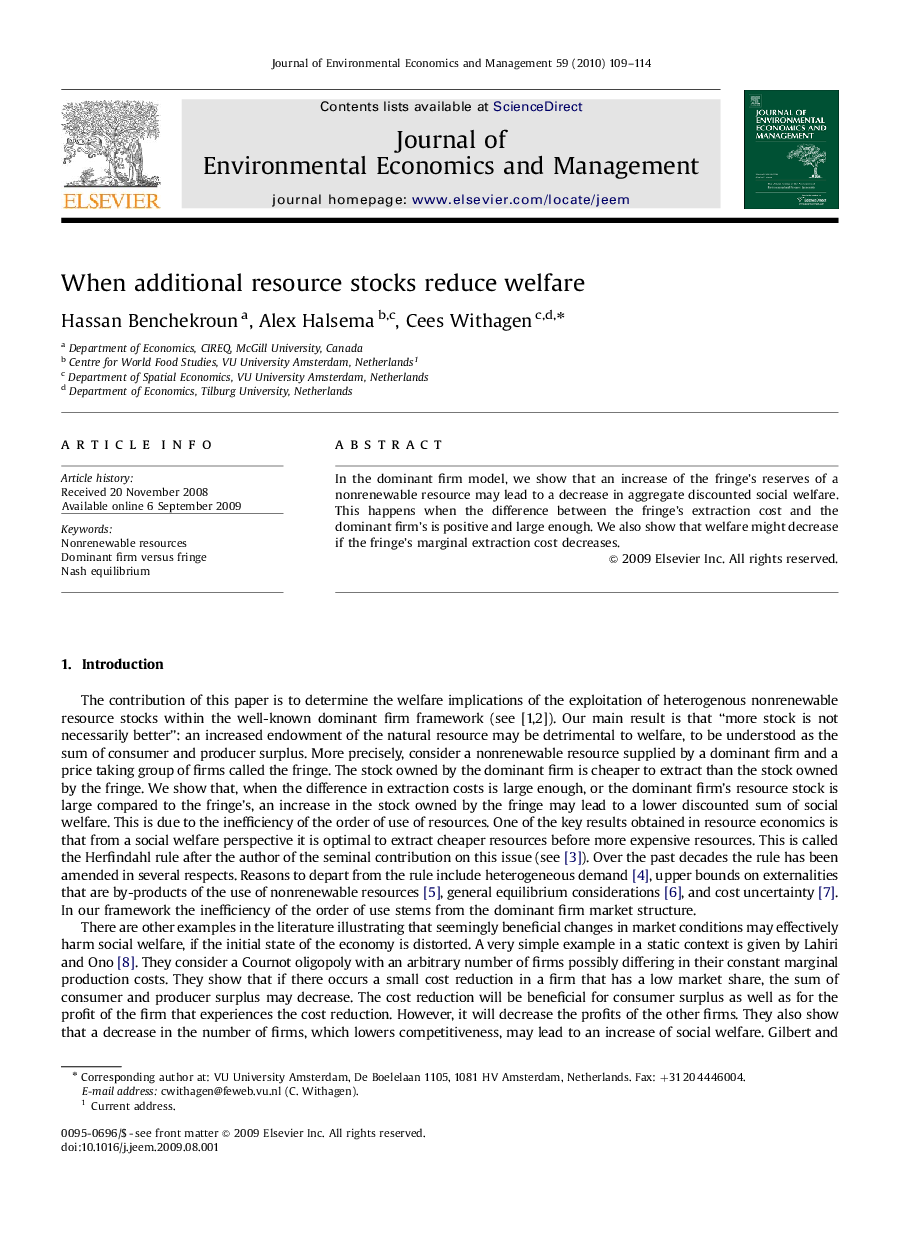| Article ID | Journal | Published Year | Pages | File Type |
|---|---|---|---|---|
| 959029 | Journal of Environmental Economics and Management | 2010 | 6 Pages |
Abstract
In the dominant firm model, we show that an increase of the fringe's reserves of a nonrenewable resource may lead to a decrease in aggregate discounted social welfare. This happens when the difference between the fringe's extraction cost and the dominant firm's is positive and large enough. We also show that welfare might decrease if the fringe's marginal extraction cost decreases.
Related Topics
Social Sciences and Humanities
Economics, Econometrics and Finance
Economics and Econometrics
Authors
Hassan Benchekroun, Alex Halsema, Cees Withagen,
